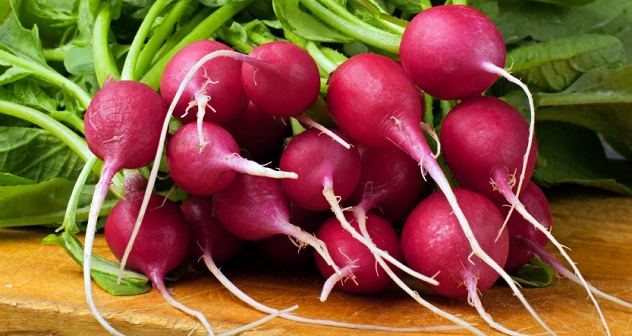 Humans
Humans  Humans
Humans  Technology
Technology The 10 Largest Modern Data Leaks Since 2013
 Travel
Travel Ten Little-Known American Haunts Far off the Beaten Path
 Movies and TV
Movies and TV 10 Strange Fan Rituals Keeping Cult Classics Alive
 Weird Stuff
Weird Stuff 10 Strange Facts about Aldi
 Our World
Our World 10 Times Nature Invented Something Before Humans Did
 Weird Stuff
Weird Stuff 10 Surprising Facts About the History of Prank Phone Calls
 Movies and TV
Movies and TV 10 Characters Recast Because the Actors Died
 Humans
Humans 10 Times Being Late Saved Someone’s Life
 Facts
Facts 10 Hilariously Specific Studies That Were Surprisingly Useful
 Humans
Humans 10 Thanksgiving Stories Sure Tto Blow Your Mind & Warm Your Heart
 Technology
Technology The 10 Largest Modern Data Leaks Since 2013
 Travel
Travel Ten Little-Known American Haunts Far off the Beaten Path
Who's Behind Listverse?

Jamie Frater
Head Editor
Jamie founded Listverse due to an insatiable desire to share fascinating, obscure, and bizarre facts. He has been a guest speaker on numerous national radio and television stations and is a five time published author.
More About Us Movies and TV
Movies and TV 10 Strange Fan Rituals Keeping Cult Classics Alive
 Weird Stuff
Weird Stuff 10 Strange Facts about Aldi
 Our World
Our World 10 Times Nature Invented Something Before Humans Did
 Weird Stuff
Weird Stuff 10 Surprising Facts About the History of Prank Phone Calls
 Movies and TV
Movies and TV 10 Characters Recast Because the Actors Died
 Humans
Humans 10 Times Being Late Saved Someone’s Life
 Facts
Facts 10 Hilariously Specific Studies That Were Surprisingly Useful
10 Mystical Tales Of Ordinary Foodstuffs
Ancient peoples often had complex and fascinating stories about food, from the legends of fabled lands with exotic spices to the tales of gods bequeathing humanity with sacred cereals or cups of mind-altering enjoyment. But even the humblest items in our fridges and pantries have a rich history in mysticism and mythology.
10 Salt

In many cultures around the world, salt is considered a symbol of purity, a substance with the ability to ward off evil spirits. In European folklore, salt is often used to keep witches at bay, while the Quebecois believed sprinkling salt at the doorstep would frighten off lutins, mischievous imps that would often spook horses.
Salt also plays an important part in the Jewish and Christian traditions, and modern advocates of spiritual warfare see it as a weapon in the fight against Satan. After all, salt is mentioned many times in the Bible in regard to cooking, rituals, and covenants with God. Buddhism and Shinto have similar views on the efficacy of salt in repelling evil spirits.
Many modern Okinawans bless new cars with salt and carry small packets of salt around with them in their vehicles for protection. Following the September 11 attacks, heightened security checks at US bases on the island saw guards questioning local workers about the mysterious bags of white powder in their vehicles. Evidently, the “mysterious” white powder was perceived as a possible threat, despite the local customs.
For the Zuni people of the American Southwest, one of the most important deities is the Salt Mother, or Ma’l Oyattsik’i, who dwells in the Zuni Sacred Lake. According to their oral tradition, she once lived much closer to the Zuni people but relocated to the lake after being offended by their behavior. This is why the Zuni and other neighboring tribes must travel there in order to obtain salt, which is an important part of religious ceremonies and traditional baptismal rituals.
9 Potatoes

The humble potato once had a difficult time finding acceptance as a foodstuff in Europe, but it was eventually adopted—rather enthusiastically—for its folk healing powers. In Scotland and Ireland, the potato was used to treat rheumatism, and in other various parts of the British Isles it was used for cramps, boils, asthma, and sore throats.
Similar folklore appeared in North America, where a potato placed under the bed was thought to assist conception and prevent night sweats. Some even believed three potatoes carried in the pockets prevented hemorrhoids. There is little evidence of such folk remedies among Native Americans, except in the case of curing warts. This suggests the potato remedies originated in Europe and spread back to the Americas.
While the potato originated in the Americas, the Muslim Hui people of China have a very different legend about its origin. They say that while Muhammad was on his holy campaign, his army was hungry and holed up in a valley, so he prayed to Allah for help. He then ordered his men to build a stone hearth, fill it with burning firewood, and place large stones inside before sealing it with clay. After two hours, the hearth was opened to reveal the stones had become potatoes. Fortified by the feast, the Islamic soldiers won the next battle and later found potato plants growing in the valley.
8 Milk

Irish folklore spoke of a great cow named Glas Ghaibhleann that wandered the country, bestowing a wonderful milk with 100 percent cream content for free to anyone who approached. Many towns were named after this cow, and some believed the animal represented Ireland itself. Various explanations for the cow include that she was a fairy beast belonging to the king of the sea or the underworld, or possibly she was a guise for the goddess Bo Find.
The disappearance of free milk in Ireland was linked in legends to various wicked individuals who tried to steal the milk, thus causing the creature to fly away or disappear. One notable story has someone milking the great cow into a bottomless cavity called Poll na Leamhnachta, or “hole of sweet milk,” causing her to leave in distress. Tales of a great milk cow were also known in other parts of the British Isles, and one story from Wales has the cow vanishing from the Earth after the greedy residents of a valley plotted to turn her into steak-and-kidney pie.
Some contend these legends are distantly related to ancient Indian myths of “cloud cows” that would rain milk from the sky. According to the stories, these bovines were ultimately captured by the demon Vritra to bring famine to the Earth. Indeed, milk has a special significance in Indian mythology, where breast milk symbolized a feminine mystical power equal to that of a man’s semen. Additionally, milk from the breasts of the goddess Parvati brought immortality. Both Indian and Irish legends also speak of evil men killed by ingestion of a fatal pseudo-milk, or “black milk.”
7 Bread

Historically, bread has played an extremely important part in the history of much of western Eurasia. Bread is also important in the Jewish tradition, where it is known as lechem, and was one of the acceptable sacrificial offerings in biblical times.
When the Jewish people wandered through the desert in biblical times, they were said to have been sustained by manna, or lechem min hashamayim—bread from heaven. It was said to have fallen from the sky and was able to recreate any possible taste, but it could only be kept for a single day. This bread was meant to teach the Jewish people how to mature from a population of slaves to an independent people.
Specific rituals involving bread included the challah, in which part of the dough was taken and burned to commemorate the portion reserved for the priest, as well as tashlich, a custom of transferring sins to a loaf of bread which was then cast over a natural water source.
The tradition of transferring sins to bread has an interesting parallel in British and American traditions. Only instead of sins, these people often transferred diseases. British folk medicine prescribed bread poultices for boils, swelling, sprains, splinters, and sore eyes. And over in East Anglia, bread baked on Good Friday was kept throughout the year to cure ailments. This folk medicine was brought to North America, where bread was thought to be a cure for whooping cough and smallpox. Similarly, water in which burned bread had been soaked was said to cure diarrhea, and children were given bread that had been nibbled by a mouse to cure toothaches.
6 Tuna

While cans of tuna fish are considered humble or even uninspiring fare in the industrialized West, for the traditionally seafaring cultures of the Maldives, the tuna is a fish with lofty origins. Maldivian folklore speaks of a legendary navigator named Bodu Niyami Takurufanu who first introduced the favored skipjack tuna to the islands.
While on a trading voyage, Bodu Niyami’s crew caught a large, fat fiyala fish. Busy making astronomical calculations on the mast, Bodu Niyami ordered them to save him the head of the fish, but when he descended in hunger, he discovered one of his crew had picked it clean and thrown it into the sea to hide the evidence. Enraged, he ordered the helmsman to sail in the direction the fish head had been thrown.
After sailing for 83 days, they came upon a gigantic black-coral tree at the end of the world. Suddenly, they were faced with raging winds and waves. The storm threatened to toss the ship off the world’s edge until the crew tied a line to a branch of the great tree. Seeing the terror of the crew, Bodu Niyami’s rage started to subside, and he agreed to leave once the winds and tides became favorable.
After spending a night, they awoke to discover the seas were not only calm but brimming with large, unknown fish. Bodu Niyami traced an image of the fish on a piece of parchment and whispered magical words to capture its soul, sealing the parchment inside a bamboo tube. As the ship sailed back home, it was followed by a school of the strange fish. The waters around the ship teemed with so many fish that they occasionally leaped unbidden onto the deck.
Problems soon arose when they sighted two great rocks rising in the sea in front of them. Bodu Niyami recognized them as the pincers of the Queen of the Hermit Crabs, attracted by all the fish. Thinking quickly, he opened the bamboo tube, attached a weight to the drawing of the fish, and dropped it into the ocean. The school of fish and the Queen of the Hermit Crabs followed it to the ocean’s depths, saving the ship. However, upon arriving home, he tossed the empty bamboo tube into the ocean, attracting the skipjack tuna which would become the favorite catch of Maldivian fishermen.
5 Cabbage

According to the ancient Greeks, the humble cabbage has its origins in a war between man and god. A prince of Thrace known as Lycurgus had annoyed the god Dionysus by destroying the deity’s sacred vineyards. As punishment, the prince was bound to some vines, and as he wept for his lost freedom, the first cabbages sprang from his tears. This legend led to the popular classical practice of eating cabbage to stave off intoxication or hangovers, under the belief that the cabbage and the vine were natural enemies. Other Greeks, such as the Ionians, considered the cabbage sacred and invoked it in their oaths.
Cabbage myths also appeared elsewhere in Europe. Cabbage stalks were said to be used as flying steeds by fairies and witches, with one Irish legend telling of a gardener falling under fairy influence and suffering from great fatigue due to being forced to fly about every night on a cabbage stump.
In the German region of Havel, there is a legend of a hungry man who decides to steal some of his neighbor’s cabbages in the middle of the night on Christmas Eve. Just as he finishes filling his basket, he is caught in the act by the Christ child who happens to be riding by on a white horse. For stealing on the holy night, the Christ child sends him into exile on the moon with his stolen cabbages, and there he presumably remains to this day.
4 Butter

According to the folklore of Wexford County, Ireland, some people can make a deal with the Devil in order to steal butter from other people. A victim of the curse would churn and churn but produce no butter. Instead, they would sometimes yield a cream with an awful stench. One sign that a curse was on a house was a piece of fat or butter left on the doorstep. The cure was to take a coulter from a plow and redden it in the fire in the Devil’s name. This would impel the butter-thief to come to the house and reveal himself.
Magical butter theft was apparently a major problem in medieval Ireland as other regions have similar tales. One story tells of a priest making his morning rounds when he passed an old woman collecting dew and saying, “Come all to me, come all to me, come all to me.” Without really realizing it, the priest responded with, “And half to me, and half to me, and half to me.”
He didn’t give the matter another thought until he got home and was informed the morning’s churn had yielded three times the usual amount of butter. Soon, his neighbors arrived to complain their churns had yielded nothing, and the priest suddenly remembered that witches could steal butter by collecting dew. Realizing he must have inadvertently become wrapped up in the witch’s spell, he distributed the butter to his neighbors. Afterward, they went to the house of the old woman, where they found that despite only owning an old billy goat, she had three tubs of fresh butter.
3 Peas

The historian Walter Kelly believed that peas were a central part of Indo-European mythology, somehow related to “celestial fire.” One Norse myth says peas were originally sent to Earth by the god Thor as a punishment. He sent out dragons to pollute wells and water sources with peas, but some of them landed on the ground and sprouted. To avoid further antagonizing the deity, the Norse traditionally ate peas on Thursday (Thor’s Day).
In Germanic legends, a race of dwarves called Zwergs, who’d once forged Thor’s hammer, loved peas so much that they would go out in “caps of darkness” that rendered them invisible while they stole peas from farmers’ fields.
In British folklore, a pod of exactly nine peas had a curious association with romance, leading to a tradition called peasecod wooing. In Suffolk, a kitchen maid who found a pod with nine peas would lay it on the lintel, which meant the next young bachelor to enter would become her husband or sweetheart. Meanwhile in Cumbria, if a young woman discovered her beau was unfaithful or if a young man lost his love interest to a rival, local youths of the opposite sex would console them by rubbing them with “peas-straw.”
2 Radish

Believe it or not, the radish was esteemed by the ancient Greeks. According to the Roman author Pliny, when the Greeks made offerings to the god Apollo at Delphi, they modeled a radish in gold, a beetroot in silver, and a turnip in lead. The radish was also important to the Hindu god Ganesha, who is often depicted as holding the vegetable in one of his left hands. He’s also said to exhort his followers to grow plenty of them so they can use them regularly in offerings.
Every year in Japan, a large radish with two sections and a forked root is offered to the god Daikoku-sama. According to legend, Daikoku-sama had eaten too many rice cakes and was told by his mother to eat a radish to avoid death. He found a servant girl washing radishes and asked for one, only to be refused as the girl’s master had already counted them. Luckily, she had a two-section radish that she could break in half, thereby saving the deity’s life.
One curious piece of Russian folklore features a radish used to censure the excesses of Ivan the Terrible. In the story, the city of Novgorod offered the tsar a radish. Much to Ivan’s surprise, the radish magically appeared as a horse’s head, which was forbidden for Christians to eat. After Ivan refused the gift, the citizens of Novgorod retorted, “So it’s a sin to eat a horse’s head, but destroying people is a holy deed.” They then blessed the radish, allowing it to return to its true form.
1 Cucumber

The cucumber has shown up a surprising number of times in world folklore, and it’s often considered a symbol of fertility. An early Buddhist legend tells of King Sagara, whose wife, Sumati, bore 60,000 children. Oddly enough, the first of her children was a cucumber named Ikshvaku. Somehow, Ikshvaku eventually had a son who climbed to heaven on his own vine.
In ancient Rome, women wore cucumbers around their waists to encourage pregnancy. Strangely, the plants were disliked by herbalists in the British Isles. They considered them too cool for human stomachs, so naturally they were the cause of illness and death. In 1766, English writer Landon Carter wrote critically of his daughter, “She does bear ungovernable the whole summer through, eating extravagantly and late at night of cucumbers and all sorts of bilious trash.”
The British view was rare, as cucumbers were more often linked with sexuality. The Pennsylvania Germans believed that cucumbers were best sown in daylight by a naked man in the prime of his life. They also thought the “visible virility of the sower” would determine a cucumber’s length. The cucumber’s darker associations with sexuality can be seen in their connection to the Japanese kappa demon, a being that raped women and was only satiated by human blood or cucumbers.
One ancient Javanese legend tells of a couple who prayed daily for a child. They were overheard by an evil giant named Buto Ijo, and he gave the couple a magical cucumber seed that would yield a baby girl. But there was a catch. Buto Ijo would only give them the seed if he could eat the girl when she turned 17. The couple agreed, and the seed yielded a golden cucumber that produced a girl named Timun Mas.
When she inevitably turned 17, the hungry giant showed up. But her parents went back on their deal. They gave Timun Mas a special bag and told her to run for it. As she fled, she took salt out of the bag and threw it behind her. The salt became a sea which the giant was forced to cross. She then threw chili powder, and it became a spiky bush, entangling Buto Ijo. Next, she tossed cucumber seeds that immediately sprouted, prompting the hungry giant to pause for a snack. When he was finished, he continued pursuing the girl, so she finally threw a handful of shrimp paste. It became quicksand and swallowed the giant, and Timun Mas inexplicably returned home to her parents.
David Tormsen believes that instant ramen cures hangovers and wards off banshees. Email him at [email protected].








